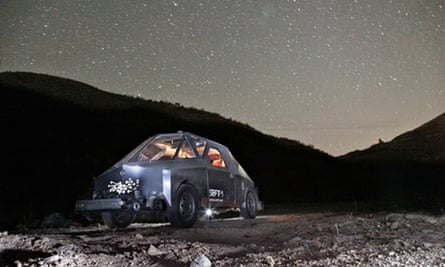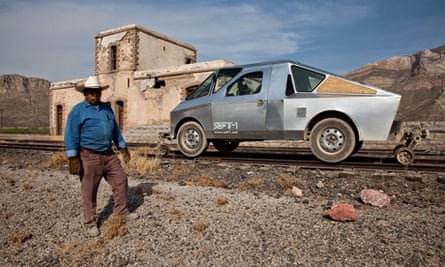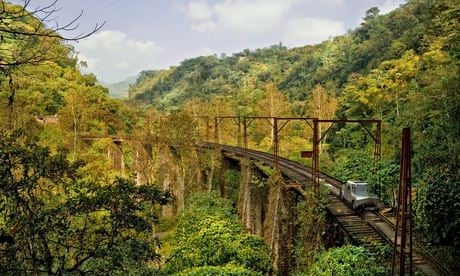The lure of ruins is complex. Ruins inspire the imagination, incite pleasantly melancholy thoughts, and humanise a landscape. Only in the wildest places can we walk without coming across some kind of ruin – some human trace of enigmatic predecessors on the remote pathways. Even in the highest mountains in Snowdonia, you constantly come across quarry workings, abandoned huts and tumbledown walls. The marks of human industry are everywhere.
Modern ruins are the strangest of all.
In their project SEFT-1 Abandoned Railways Exploration Probe, opening soon at Furtherfield Gallery, the Mexican artists Ivan Puig and Andres Padilla Domene used a car converted for rail travel to investigate the power of modern ruins. Adapting their car into a small personal railway locomotive, they travelled Mexico's forgotten railways, many of which have slumped into disuse since the national railway system, created in the 19th century, was privatised in the 1990s.

Ruinous desolate stretches of track slowly decay back into the fertile landscape in the pictures they took on their journey into a past that is also an image of some dystopian future when our world is abandoned and reverts to jungle and forest.
Modern ruins like Mexico's railways or the dying city of Detroit are the stuff of 21st-century dreams, for we already live in the ruins of modernity. When does a ruin count as a modern ruin? Does it have to be less than 50 years old, or less than 200? Arguably the oldest "modern ruins" are preserved in the early British industrial landscape of Ironbridge, where modern technology started in the 18th century; or perhaps even in Renaissance fortifications that resemble 20th-century bunkers.

In Mexico as in Britain, there are plenty of ancient ruins to inspire wonder. When we look at modern ruins we get a different feeling. We are amazed by the stupendous waste and wreckage of industrial economies. An entire railway system lies abandoned, going to waste, in the eerie world explored by Puig and Domene. Elsewhere an entire island city can be experienced as a modern ruin. In fact, ruins are everywhere in modern cities. Look again at that derelict space below the overpass, that wasteland by the industrial estate. Even building sites are ruins in reverse, film footage run backwards of a city falling down.
When we look at these sights we look at a cracked and crumbling reflection of ourselves.

Comments (…)
Sign in or create your Guardian account to join the discussion